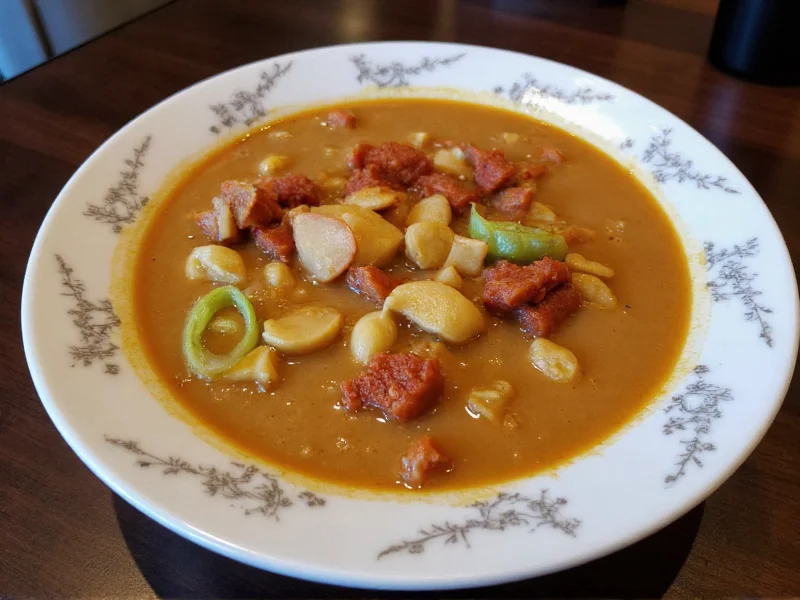Defining Characteristics of Successful Soup Companies
What separates thriving soup businesses from those that struggle? Industry analysis reveals several consistent patterns among successful operations. First, product quality remains paramount—consumers increasingly scrutinize ingredient lists, preferring minimal processing and recognizable components. Soup companies that prioritize clean labels while maintaining flavor complexity tend to build stronger customer loyalty.
Second, operational efficiency determines profitability in this competitive space. Commercial soup production requires precise temperature control, consistent mixing processes, and efficient packaging systems. Companies investing in appropriate equipment for their scale—whether steam-jacketed kettles for small batches or automated filling lines for mass production—achieve better consistency and cost management.
| Business Model | Startup Investment | Distribution Channels | Typical Profit Margin |
|---|---|---|---|
| Artisanal Small-Batch | $50,000-$150,000 | Local markets, specialty stores | 35-50% |
| Regional Commercial | $250,000-$750,000 | Grocery chains, foodservice | 20-30% |
| National Brand | $1M+ | National retail, e-commerce | 15-25% |
Navigating Regulatory Requirements
Food safety regulations form non-negotiable foundations for any legitimate soup company. In the United States, the FDA's Food Safety Modernization Act (FSMA) mandates strict hazard analysis and risk-based preventive controls. Soup manufacturers must implement comprehensive food safety plans addressing potential biological, chemical, and physical hazards throughout production.
Commercial kitchen requirements vary by jurisdiction but typically include separate preparation areas, proper ventilation systems, and certified equipment meeting NSF standards. Companies producing shelf-stable products need proper thermal processing validation, while those making refrigerated or frozen soups require precise temperature monitoring protocols. Documentation trails from ingredient sourcing through final distribution prove essential during health inspections.
Market Positioning Strategies That Work
Standing out in the crowded soup marketplace demands thoughtful differentiation. Successful soup companies identify specific consumer segments and tailor offerings accordingly. Some effective positioning approaches include:
- Specialty dietary focus: Developing gluten-free, vegan, or keto-compliant soup lines that address specific nutritional needs
- Hyper-local sourcing: Building marketing around regionally-sourced ingredients with transparent supply chains
- Convenience innovation: Creating ready-to-heat formats with minimal preparation time for busy consumers
- Culinary authenticity: Focusing on traditional recipes from specific cultural traditions with authentic preparation methods
Market research indicates consumers increasingly value transparency in soup manufacturing. Companies that openly share information about ingredient origins, production processes, and sustainability practices build stronger trust. The most successful soup businesses treat their manufacturing facilities as marketing assets, offering virtual or in-person tours that showcase quality control measures.
Overcoming Common Industry Challenges
Soup companies face distinctive operational hurdles requiring specialized solutions. Ingredient cost volatility represents a persistent challenge, particularly for businesses using seasonal or specialty components. Forward-thinking companies mitigate this through strategic purchasing, developing relationships with multiple suppliers, and creating flexible recipes that accommodate ingredient substitutions without compromising quality.
Shelf life management proves critical across all soup company business models. Proper pH balancing, thermal processing validation, and packaging selection directly impact product longevity. Companies producing refrigerated soups typically achieve 7-14 day shelf lives through careful formulation and strict temperature control, while shelf-stable products require validated canning or retort processes to ensure safety for months or years.
Distribution logistics present another significant consideration. Soup's weight and liquid nature increase shipping costs substantially compared to dry goods. Successful companies optimize their distribution strategies by focusing on regional markets initially, partnering with established food distributors, or developing direct-to-consumer models that maximize order density in specific geographic areas.
Emerging Trends Shaping the Future
The soup industry continues evolving in response to changing consumer preferences and technological advancements. Several notable trends are gaining momentum:
Functional ingredients are becoming increasingly prevalent, with soup companies incorporating adaptogens, probiotics, and other wellness-focused components. Consumers now expect soups to deliver specific health benefits beyond basic nutrition, driving innovation in product development. Companies that successfully balance functional ingredients with great taste are capturing growing market share.
Sustainability considerations now significantly influence purchasing decisions. Forward-thinking soup companies are implementing eco-friendly packaging solutions, reducing water usage in production, and developing circular supply chains. Some innovative businesses have introduced reusable container programs or concentrate formats that minimize transportation emissions.
E-commerce continues transforming how consumers access soup products. Direct-to-consumer models allow artisanal producers to reach national audiences without traditional retail gatekeepers. Subscription services providing weekly rotating soup selections have demonstrated particular success, creating recurring revenue streams while introducing consumers to new flavors and varieties.
Evaluating Soup Company Quality: A Consumer Perspective
For consumers navigating the diverse soup marketplace, several indicators help identify higher-quality products. Ingredient transparency remains the most reliable metric—companies listing specific ingredient sources rather than generic terms typically maintain higher standards. Look for products that avoid artificial preservatives, colors, and flavors while maintaining reasonable shelf stability through proper formulation.
Packaging provides additional quality clues. Glass containers often indicate premium positioning with better flavor preservation, while innovative pouch designs may offer convenience without compromising quality. The presence of third-party certifications (organic, non-GMO, B Corp) provides independent verification of quality claims.
Taste remains ultimately subjective, but professional reviews and consumer feedback often highlight consistent quality markers. Soups with balanced flavor profiles, appropriate texture, and absence of metallic or processed aftertastes typically represent superior manufacturing practices. Companies that offer sample sizes or money-back guarantees demonstrate confidence in their product quality.











 浙公网安备
33010002000092号
浙公网安备
33010002000092号 浙B2-20120091-4
浙B2-20120091-4